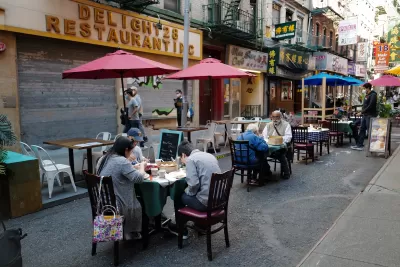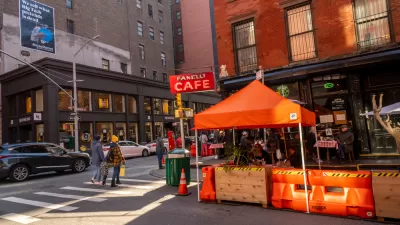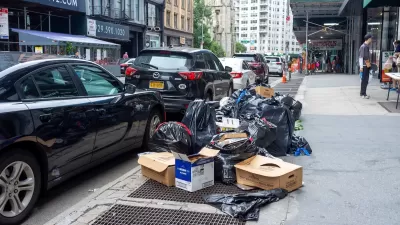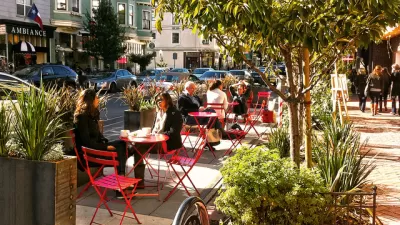Restaurant owners say the city’s new outdoor dining program makes it too difficult and expensive to operate al fresco setups.

Many of New York City’s outdoor dining structures are being removed to make way for (mostly free) parking after restaurants and bars failed to make them compliant with the city’s new requirements.
According to a report by Kevin Duggan in Streetsblog NYC, businesses with non-compliant designs had to take down their setups by November 1, while compliant businesses must remove them by November 29, since the outdoor dining program doesn’t apply in winter months. The new rules, which call for a public hearing for new outdoor dining applications, require that structures be easily removable and lightweight, banning fully enclosed hard structures.
Restaurant owners say the seasonal program makes operating an outdoor dining area more expensive since they must pay for removal and storage during the off-season, and many say they will stop offering outdoor dining altogether. “The numbers of sheds dropped significantly after the new regime first kicked in over the summer, with around 3,000 applications for roadway and sidewalk cafés as of late September, according to the Department of Transportation. Transportation officials estimate that the program peaked at 6,000 to 8,000 participants, including some 5,000 setups as of this summer.”
FULL STORY: Parking? Lots! Outdoor Dining Structures Are Coming Down Across the City

Study: Maui’s Plan to Convert Vacation Rentals to Long-Term Housing Could Cause Nearly $1 Billion Economic Loss
The plan would reduce visitor accommodation by 25,% resulting in 1,900 jobs lost.

North Texas Transit Leaders Tout Benefits of TOD for Growing Region
At a summit focused on transit-oriented development, policymakers discussed how North Texas’ expanded light rail system can serve as a tool for economic growth.

Why Should We Subsidize Public Transportation?
Many public transit agencies face financial stress due to rising costs, declining fare revenue, and declining subsidies. Transit advocates must provide a strong business case for increasing public transit funding.

How to Make US Trains Faster
Changes to boarding platforms and a switch to electric trains could improve U.S. passenger rail service without the added cost of high-speed rail.

Columbia’s Revitalized ‘Loop’ Is a Hub for Local Entrepreneurs
A focus on small businesses is helping a commercial corridor in Columbia, Missouri thrive.

Invasive Insect Threatens Minnesota’s Ash Forests
The Emerald Ash Borer is a rapidly spreading invasive pest threatening Minnesota’s ash trees, and homeowners are encouraged to plant diverse replacement species, avoid moving ash firewood, and monitor for signs of infestation.
Urban Design for Planners 1: Software Tools
This six-course series explores essential urban design concepts using open source software and equips planners with the tools they need to participate fully in the urban design process.
Planning for Universal Design
Learn the tools for implementing Universal Design in planning regulations.
City of Santa Clarita
Ascent Environmental
Institute for Housing and Urban Development Studies (IHS)
City of Grandview
Harvard GSD Executive Education
Toledo-Lucas County Plan Commissions
Salt Lake City
NYU Wagner Graduate School of Public Service





























